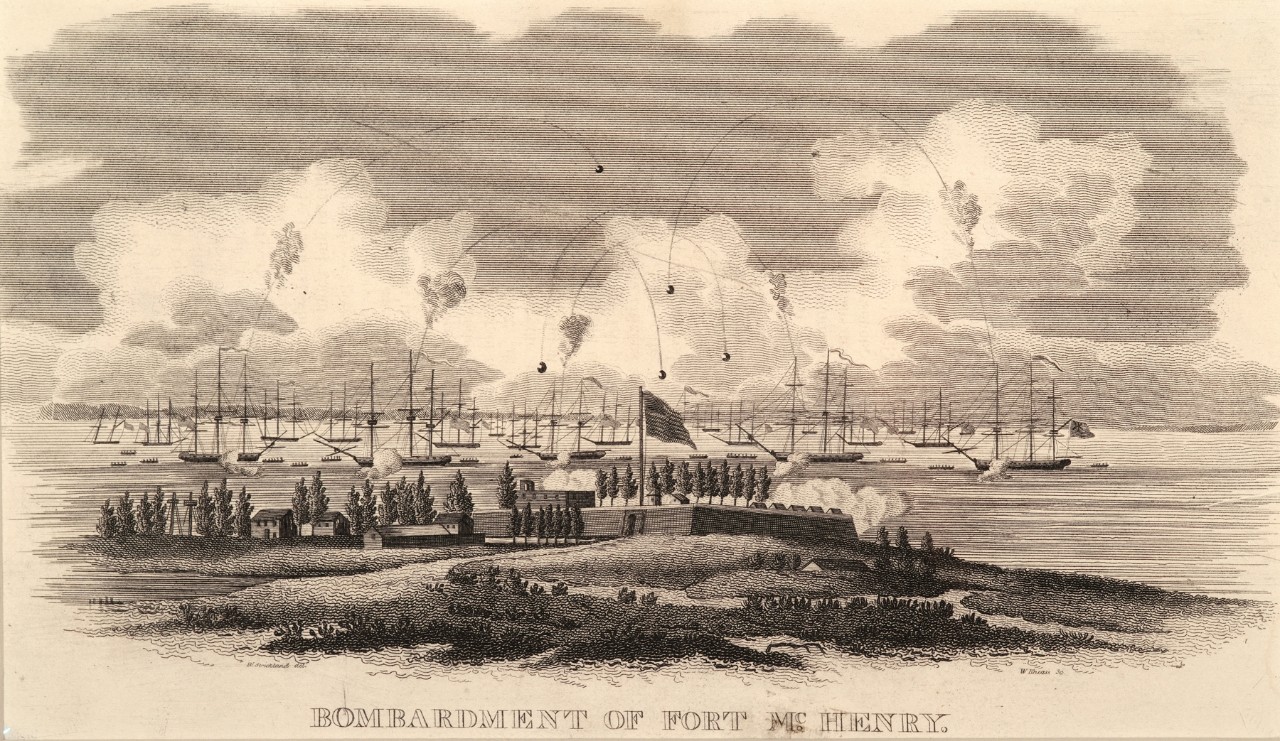Bombardment of Fort Mchenry

In spite of its easy accessibility, the Chesapeake Bay region had suffered only occasional raids during the War of 1812 until the summer of 1814. Until then Napoleon had kept British attention focused on Europe, but his defeat allowed the concentration of all their forces on making a quick end to the war in America. British commanders increased coastal raids, and in July they entertained a plan proposed by Rear Admiral Sir George Cockburn to invade Maryland and take the City of Washington. They achieved that goal easily on August 24. Troops burned and looted several buildings over two days and returned to their ships, intending to leave the reduction of Baltimore for another time, when the British commanders changed their minds and bore down on the city. The bombardment of the city's main defense, Fort McHenry, took place over the night of September 19‑20 and proved unsuccessful. The sight of the American flag still flying over the fort in the morning caused Francis Scott Key to write the poem that eventually became "The Star Spangled Banner." The British fleet withdrew from the Chesapeake to Jamaica.
- Art
- War of 1812 1812-1815
- Image (gif, jpg, tiff)
- NHHC


